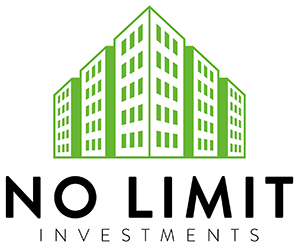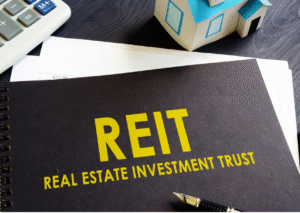What Makes Long-Term Real Estate Investment Financing Essential?
When building wealth through property, financing often determines whether your portfolio thrives or stalls. Real estate is capital-intensive, and most investors, new or experienced, cannot rely solely on personal savings. Long-term real estate investment financing provides the necessary leverage to acquire, develop, and maintain properties while preserving liquidity for future deals.
Unlike short-term funding, long-term financing focuses on sustainability. It allows investors to spread repayment over extended periods, making monthly obligations manageable and ensuring that rental income or resale profits support growth. According to the U.S. Department of Housing and Urban Development (HUD), access to reliable financing is central to advancing housing opportunities and expanding communities (HUD). For investors, that translates into scalable, strategic property growth.
How Do Different Financing Options Support Various Investment Strategies?
Investors pursue multiple strategies, and financing must align with those goals. No single loan type suits everyone, which is why diverse financing products exist. Long-term real estate investment financing is adaptable—it can help house flippers, buy-and-hold investors, and developers alike.
Some of the most valuable loan types available to investors today include:
- Fix & Flip Loans – Designed for investors who buy undervalued homes, renovate them, and sell at a profit. These loans provide quick capital access to fund purchases and repairs.
- Buy & Hold Mortgages – Perfect for those seeking passive income through rental properties. By spreading payments over longer terms, investors can create stable, long-lasting revenue streams.
- BRRRR Financing – Standing for Buy, Rehab, Rent, Refinance, Repeat, this strategy is highly effective for portfolio expansion. The refinancing step recycles capital into new investments, maximizing long-term returns.
- Cash Out Refinance – Enables investors to tap into the built-up equity of a property without selling it. These funds can be reinvested into new opportunities.
- DSCR Loans (Debt Service Coverage Ratio Loans) – Income-based financing that relies on property cash flow rather than personal income, making it easier for investors with multiple properties to qualify.
- New Construction Loans – Tailored for ground-up developments, giving builders and developers access to the resources needed for large projects.
- Comprehensive Real Estate Financing Solutions – A blend of customized funding designed to match unique investor goals.
These options, when strategically chosen, support both short-term profitability and long-term sustainability.
Why Should Investors Consider the Long-Term Perspective?
Short-term deals may offer quick wins, but real wealth in real estate comes from sustainability. Long-term financing shifts the investor mindset from immediate flips to building generational wealth. It allows for:
- Stability in repayment – predictable monthly costs make it easier to manage cash flow.
- Portfolio scalability – the ability to reinvest while holding existing assets.
- Tax benefits – interest deductions and depreciation help offset long-term financial obligations (Internal Revenue Service).
- Appreciation gains – holding properties longer captures increasing market value.
Thinking long-term ensures investors are not just making money today but setting themselves up for financial independence tomorrow.
What Factors Should Investors Evaluate Before Securing Financing?
Not all loans or financing solutions will work for every investor. Before applying, investors should evaluate several key factors:
- Creditworthiness – While some products, like DSCR loans, rely less on personal credit, many long-term financing options still consider scores and history.
- Property type – Residential rentals, commercial units, and new developments all have different requirements.
- Loan-to-Value (LTV) Ratio – Determines how much of a property’s value can be financed. Lower LTV ratios may secure better rates.
- Cash Flow Projections – Lenders want to see that property income covers expenses. DSCR loans in particular depend heavily on this.
- Exit Strategy – Even for long-term financing, investors must clarify how they intend to profit—through rental income, appreciation, or refinancing.
By evaluating these criteria, investors can select the loan that balances affordability with opportunity.
How Do Government Policies and Market Conditions Influence Financing?
Real estate does not exist in isolation; government regulations, interest rates, and market conditions all shape financing opportunities. For instance, the Federal Reserve directly impacts borrowing costs through interest rate adjustments (Federal Reserve). During low-rate environments, long-term financing becomes cheaper, making it easier for investors to lock in affordable debt.
In addition, local zoning rules, housing programs, and tax incentives can affect the feasibility of projects. Investors must remain informed about both federal and local policies to ensure their financing choices align with market conditions and compliance standards.
How Can Real Estate Financing Solutions Support Sustainable Property Growth?
Custom financing solutions are the backbone of sustainable property growth. They allow investors to tailor funding to each property’s purpose. By combining products like Fix & Flip Loans for short-term deals and Buy & Hold Mortgages for long-term income, investors can balance quick cash flow with stable appreciation.
The flexibility of real estate financing solutions ensures that investors are not locked into rigid structures. Instead, they can adapt to changing markets and goals, all while ensuring that their properties remain profitable over the long run.
What Role Does Risk Management Play in Long-Term Financing?
Risk management is as important as capital. Even with long-term financing secured, investors must prepare for market downturns, unexpected vacancies, or construction delays. The best way to mitigate these risks is by:
- Maintaining diverse financing tools (e.g., combining DSCR loans with cash-out refinances).
- Building reserves for emergencies, ensuring that temporary setbacks don’t force liquidation.
- Conducting rental property cash flow analysis before purchasing to confirm profitability.
- Leveraging professional guidance to evaluate loan terms and repayment schedules.
Through responsible planning, long-term real estate investment financing becomes a tool for stability rather than a burden.
Where Can Investors Access Trusted Financing Support?
Finding the right financing partner is essential. Not every lender understands the complexities of long-term real estate investment financing. The most effective partners offer tailored solutions that support multiple strategies, whether that involves flipping homes, building rentals, or starting new construction projects.
For investors seeking trusted, investor-friendly solutions, No Limit Investments provides comprehensive services. Their offerings, Fix & Flip Loans, Buy & Hold Mortgages, BRRRR Financing, Cash Out Refinance, DSCR Loans, New Construction Loans, and other Real Estate Financing Solutions, equip investors with the flexibility and expertise needed to secure long-term growth.
What Is the Best Way to Take Action Today?

Securing long-term real estate investment financing is about more than filling out an application; it’s about aligning funding with your vision for sustainable property growth. The right financing can help you scale responsibly, protect your assets, and build lasting wealth.
Take the next step today with No Limit Investments. Explore customized financing solutions that fit your strategy and turn your investment goals into reality.
Final Thoughts
Long-term real estate investment financing is not just about loans, it’s about creating pathways to stability, scalability, and sustainable growth. By understanding financing options, evaluating market conditions, and partnering with trusted providers, investors can transform their real estate goals into achievable milestones. The future of wealth building lies in preparation, strategy, and the right financial support.
Works Cited
Federal Reserve. Monetary Policy. Board of Governors of the Federal Reserve System, 2024. www.federalreserve.gov/monetarypolicy.htm.
Internal Revenue Service. Tax Benefits of Owning Rental Property. U.S. Department of the Treasury, 2024. www.irs.gov/taxtopics/tc414.
U.S. Department of Housing and Urban Development. Financing and Housing Programs. HUD, 2024. www.hud.gov/program_offices/housing.
Frequently Asked Questions
- What is long-term real estate investment financing?
Long-term real estate investment financing refers to funding options that allow investors to purchase, develop, or refinance properties with extended repayment terms. Unlike short-term loans, these solutions—such as Buy & Hold Mortgages or DSCR Loans, help investors build sustainable portfolios by spreading payments over years rather than months.
- How does BRRRR Financing support long-term growth?
BRRRR Financing, Buy, Rehab, Rent, Refinance, Repeat, is a strategy designed to recycle capital. By refinancing after stabilizing a property, investors can pull equity back out and reinvest it into additional deals. This financing approach is powerful for building long-term wealth because it multiplies opportunities without requiring constant fresh capital.
- What are the main benefits of using DSCR Loans?
Debt Service Coverage Ratio (DSCR) Loans focus on the income generated by the property rather than the borrower’s personal finances. For investors, this means easier qualification when holding multiple properties and reduced dependence on personal credit reports. It’s an investor-friendly option that aligns directly with long-term cash flow potential.
- When should an investor consider a Cash Out Refinance?
A Cash Out Refinance is useful when a property has built up equity and the investor wants to reinvest without selling. For example, an investor can refinance a rental property, access its value, and use those funds to purchase or renovate additional properties—fueling continued portfolio expansion.
- How do I know which financing option is right for me?
The right financing option depends on your investment strategy, risk tolerance, and long-term goals. A Fix & Flip Loan may work for quick-turn projects, while Buy & Hold Mortgages or New Construction Loans may suit investors focused on sustainable income or development. Exploring comprehensive real estate financing solutions from No Limit Investments ensures that your funding aligns with both current needs and future growth plans.







